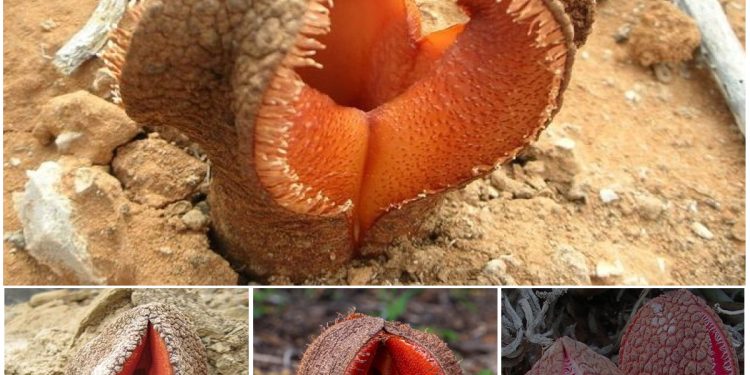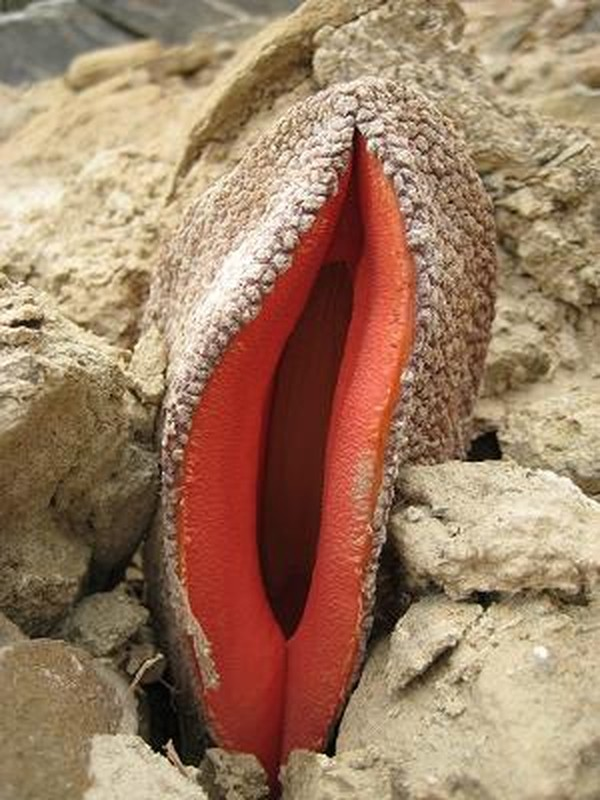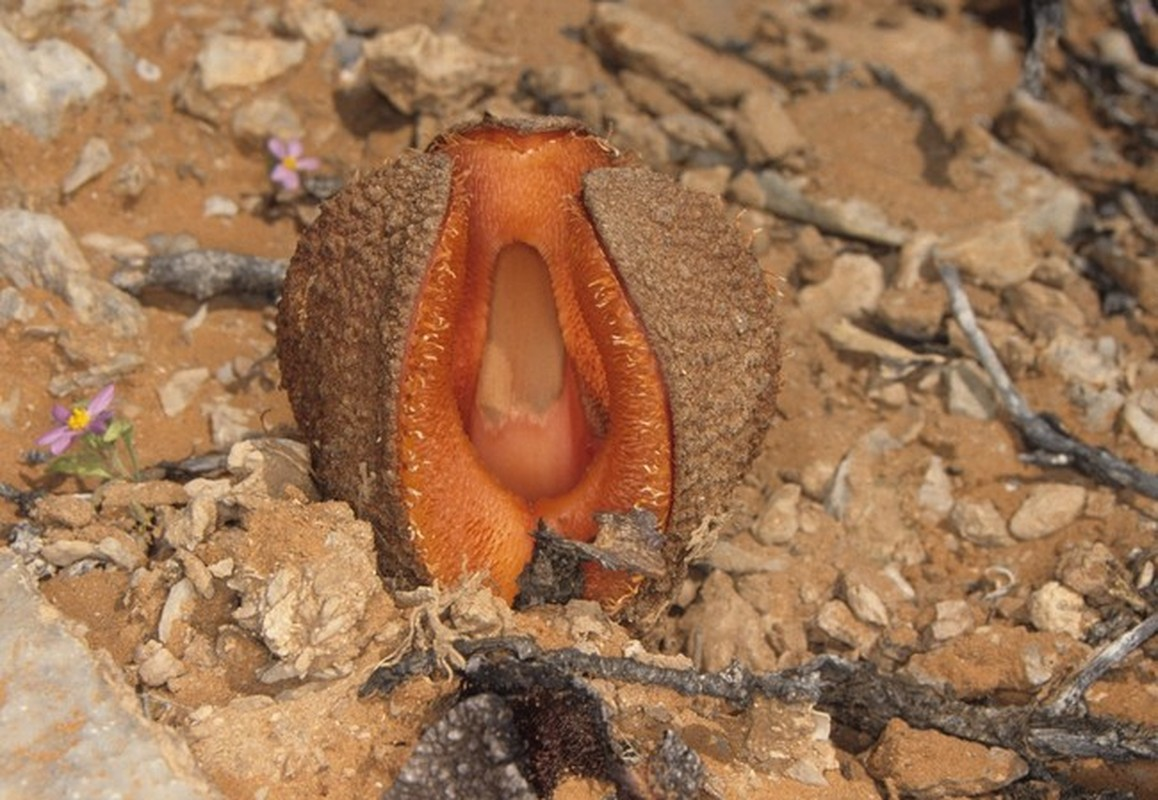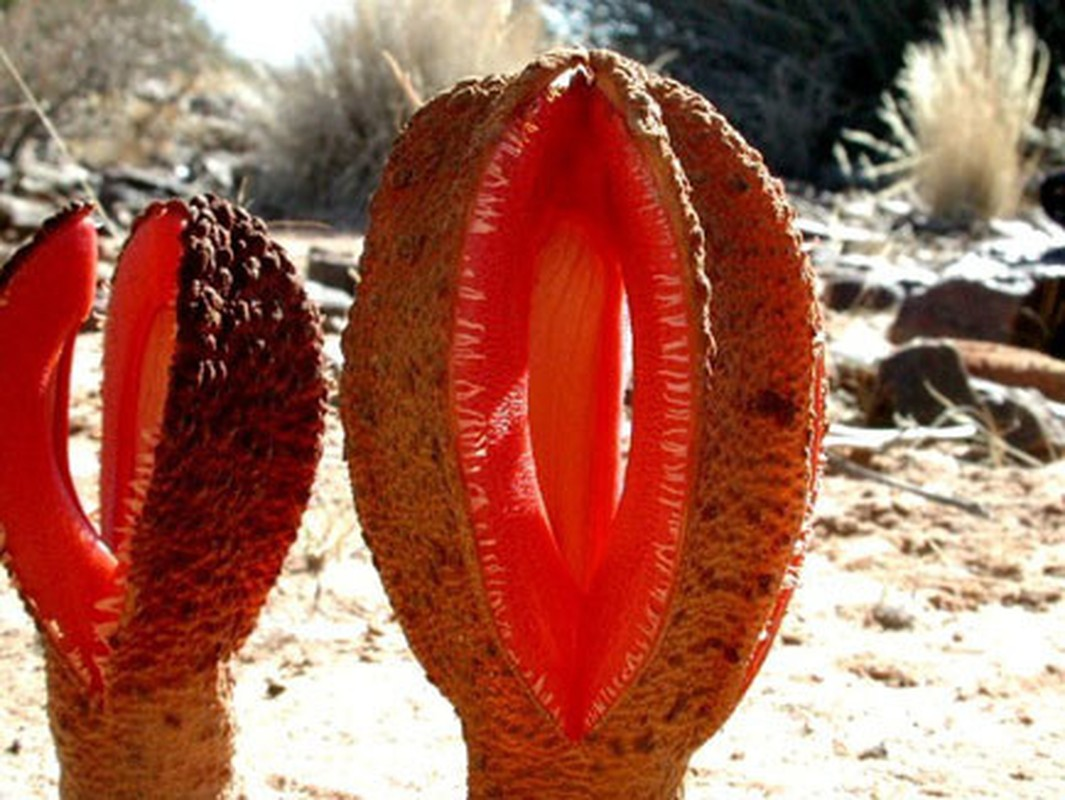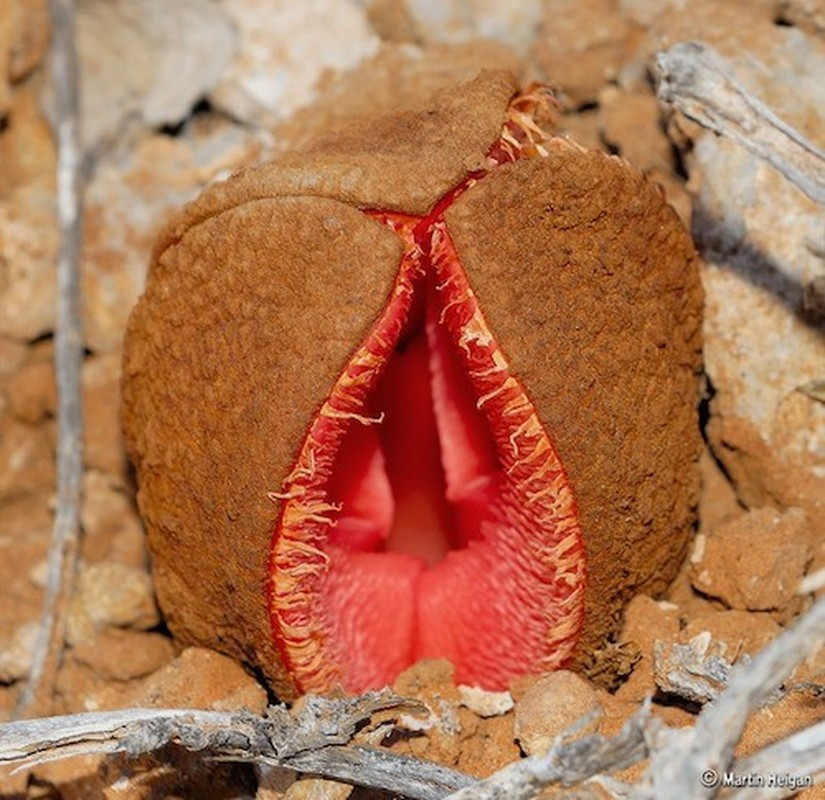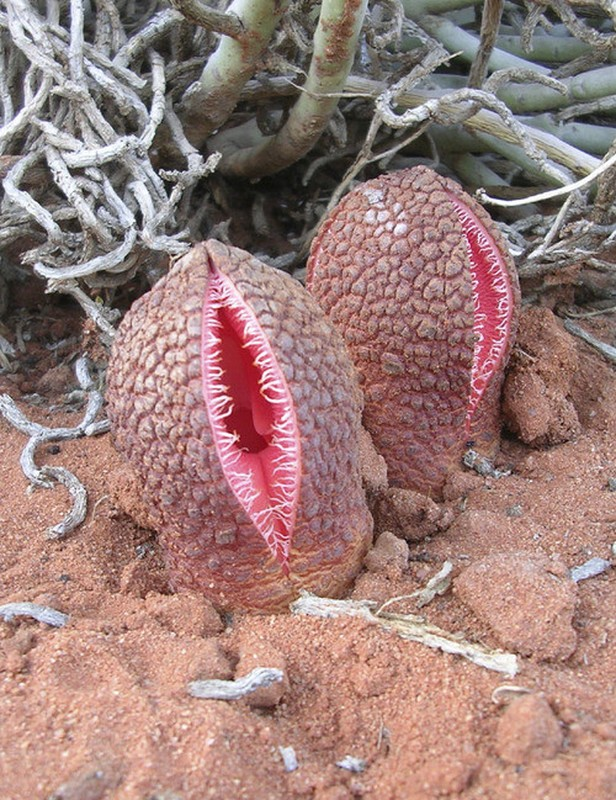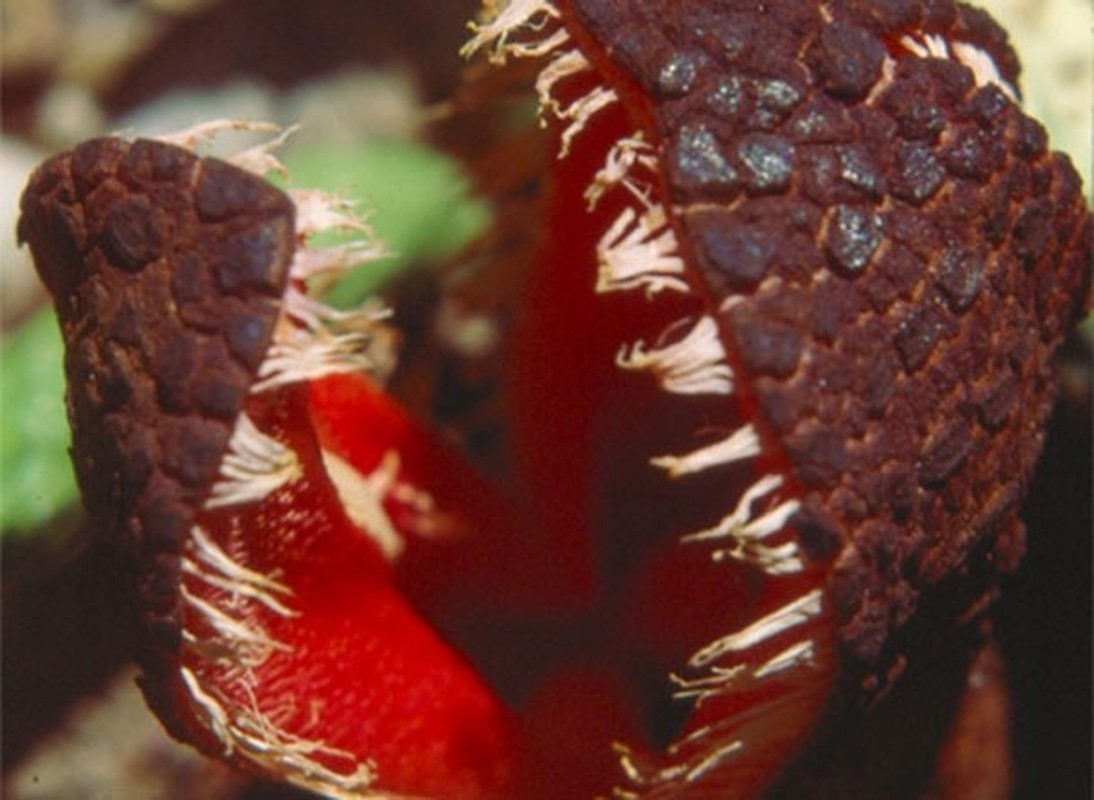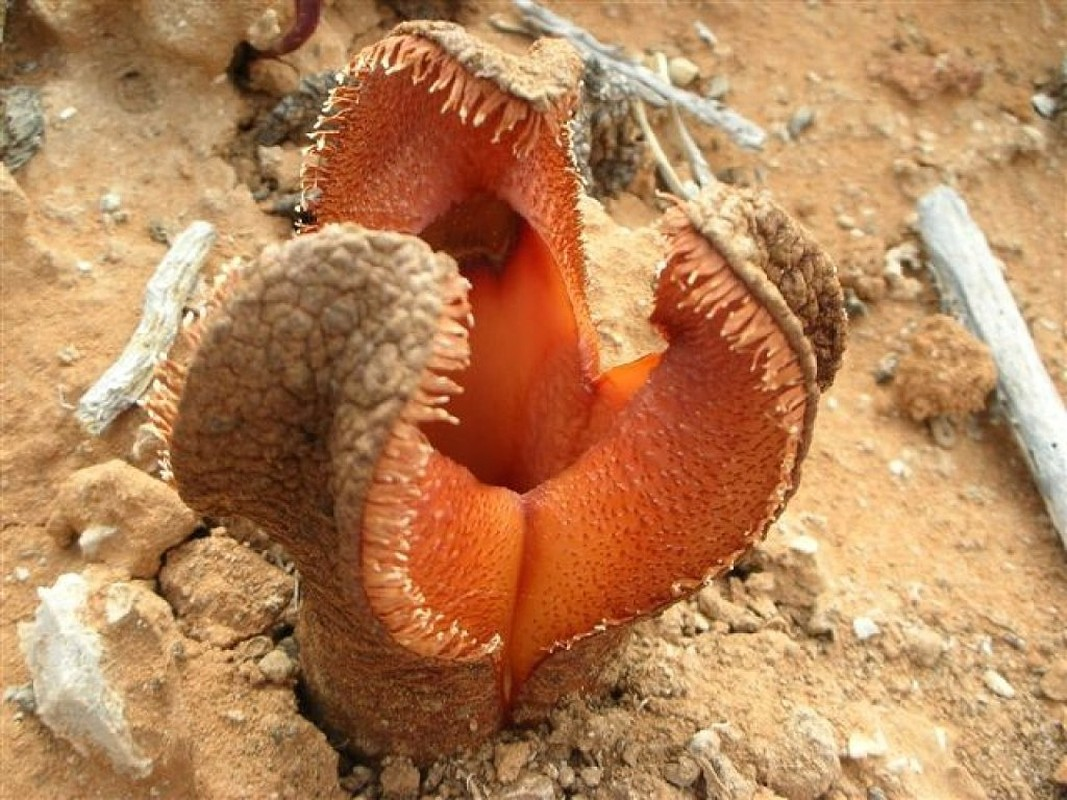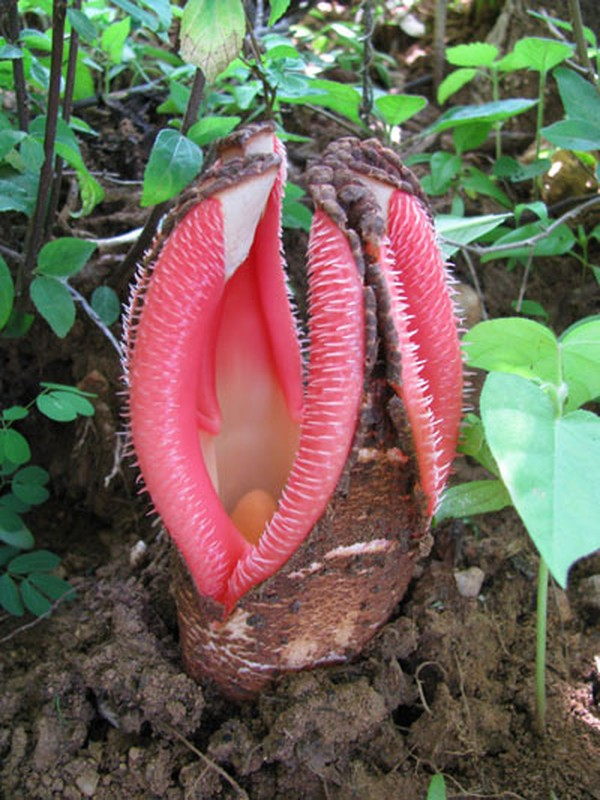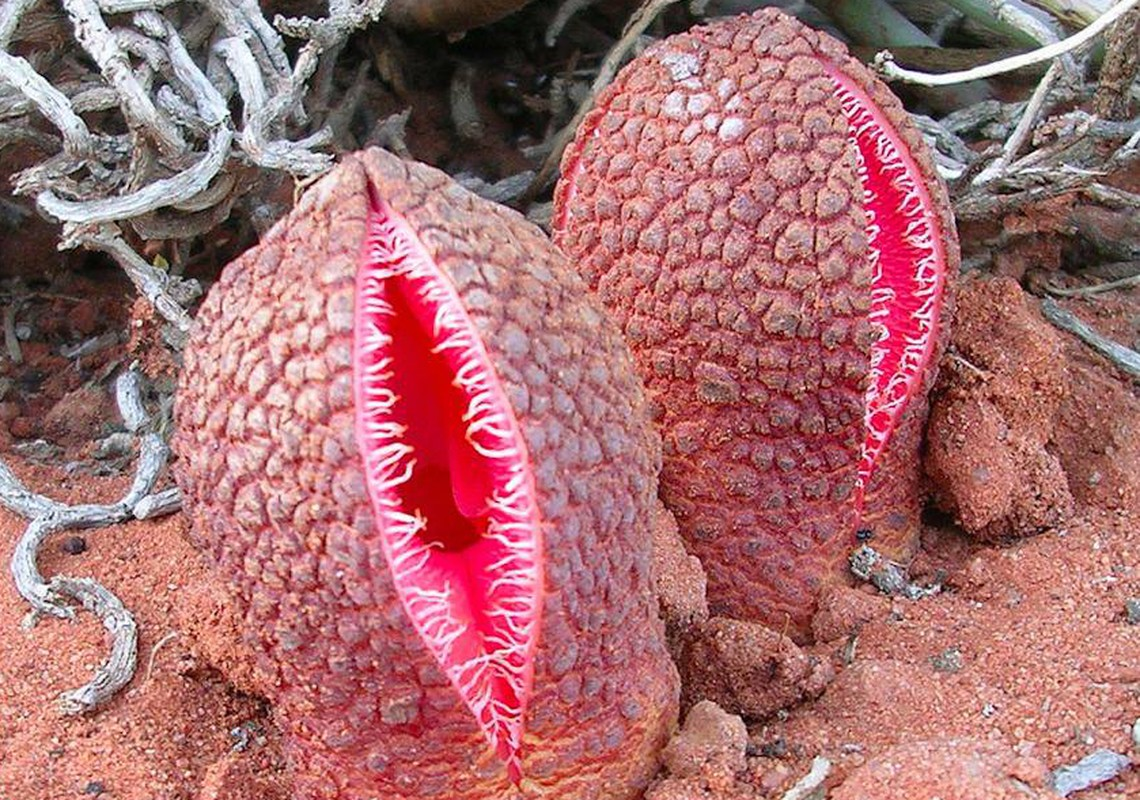Hydnora Africana, commonly referred to as “dog food,” stands out as one of the most peculiar parasitic plant species in the world. While its relatives usually remain hidden underground, siphoning nutrients from host plant roots, this fascinating species has earned its unique place in the botanical kingdom.
Hydnora Africana finds its home in coastal regions, ranging from South Africa to southwestern Angola. Its vibrant, salmon-colored exterior, akin to that of conventional flowers, serves the primary biological purpose of attracting insects. However, what sets this plant apart is its otherworldly appearance, causing many to doubt whether it’s a flower at all. Peering through the three openings of the flower reveals three entirely distinct perspectives, with some likening the interior to the maw of a monster.
The intrigue doesn’t end with its peculiar appearance. Hydnora Africana surprises us with its rather unpleasant odor, often described as reminiscent of fecal matter. It seems counterintuitive that any creature would be drawn to such a scent. Yet, the plant’s distinct odor and shape are precisely what entice its intended visitors. When beetles alight on the peculiar flower, they find themselves momentarily ensnared. However, upon their eventual escape, they inadvertently carry and distribute pollen, aiding in the plant’s reproductive cycle.
In contrast to its odorous blooms, the fruit of the Hydnora Africana plant exudes a pleasant aroma and can reach lengths of over 8 centimeters. Each fruit is laden with a wealth of life, containing nearly 20,000 seeds. Local communities have recognized the potential of this fruit for medicinal purposes, particularly for ailments related to the kidneys, bladder, constipation, and acne. It serves as a testament to the extraordinary nature of this peculiar plant, which continues to amaze and mystify those fortunate enough to encounter it.
